What Value Does a Soldier Have When He No Longer Can Kill?

In the guidebooks to the East Village of New York, there are photographs of the mosaic lampposts, the mosaic bus bench made from a broken planter, mosaic restaurant walls.
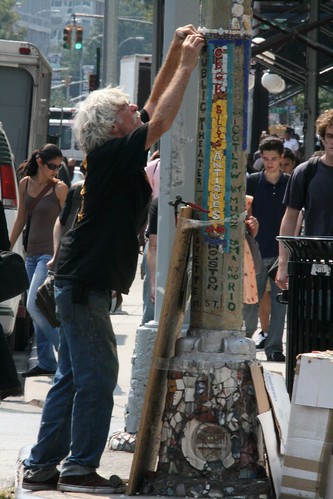
They are made by Jim Power. Jim was born in Ireland, in Waterford. He gained his citizenship when, in his late teens, he joined the US army and manned a waist gun on a helicopter in Vietnam.
"They didn't know I was half blind. I don't think I ever shot anyone, I just couldn't see anyone out there... " Jim served in Vietnam, and came home... more or less. He lived on the margins, never far from the war which took his youth and took much of the rest of his life. For twenty years now, he has festooned the East Village with joyous art. "Very TIP TOP of the Morning!" he yells to folks on their way to the never ending grind of making a living in New York as he pastes broken glass and pottery to the gray lampposts.
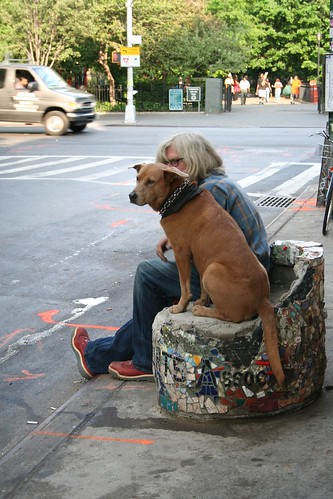
He once had an apartment, then a squat, then a tent as it became harder and harder to live on the margins of New York's former Lower East Side. Jim was one of the artists who made this neighborhood the East Village, a name first used by Tony's Diner, the Village East on the corner of Saint Marks and Third Avenue.

Now Jim is angry. His art has benefited the city in a way that cannot be measured. The property values reflect the artistic feel of the neighborhood, of which his mosaics are a very prominent part. Now, he does not even have a tent in which to sleep. So, he has grown angry at the being he loves more than anything on earth, his dog Jessie Jane. He feels the neighborhood cares more for Jessie than for him. He placed a for sale sign on her, as close to an act of suicide as he, in his still sane mind can do.
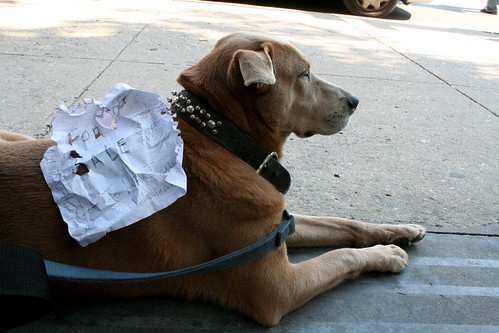
He will not part with her however, it is simply a scream for recognition. It is unlikely that Jim can sell Jessie Jane, she is completely in love with Jim and will not stay with anyone else, even for short periods.
More, he has decided to remove his art from the streets with a hammer. Some looked on in curiosity or confusion as Jim railed at the lack of appreciation shown to him by the city, and threatened to run for Mayor in the next election. A passerby, Sweet Lew, a saxophone player, begged Jim to leave his work in place as chips of mosaic flew from the lamppost under his attack. Jim screamed that he was going to Philadelphia where "artists are respected."

Two fire department ambulances and two police cars arrived. Many in the crowd were worried that he might be taken into custody. However, the police and fire department EMTs calmed him down.
Jim explains that for years his work has been included in tourist guides to New York, helping bring people to New York and to the East Village. He says that he does not expect charity, but rather the city owes him a roof over his head, without having to give up his dog -- a condition of most shelters. "I should get a paid job for two years of work repairing my 80 lampposts."
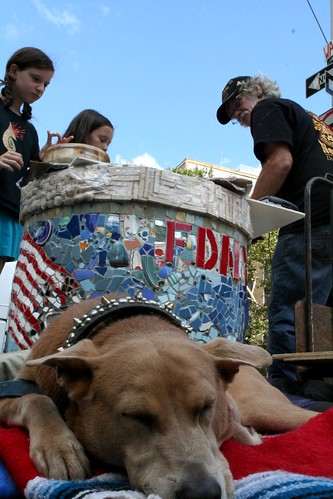
Jim often does workshops for the children, either in schools or out on the street where he works on public art. He just wants to be able to keep doing this without having to live on the street for another winter.
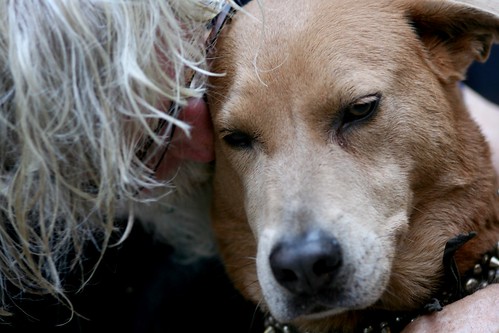


4 Comments:
what a lovely photo essay, thank you.
Lorcan,
Your photos are unbelievably vivid and honest and powerful! You really catch a lot of subtlety and innuendo. I love that lady cop and the park gent with the drink in the bag.
Beautiful, eloquent work!!! Thank you!
-Chris Japely
Please keep us updated on the story of Jim and his dog Jesse Jane. What can we do to help?
Any updates on Jim and Jesse?
Post a Comment
<< Home